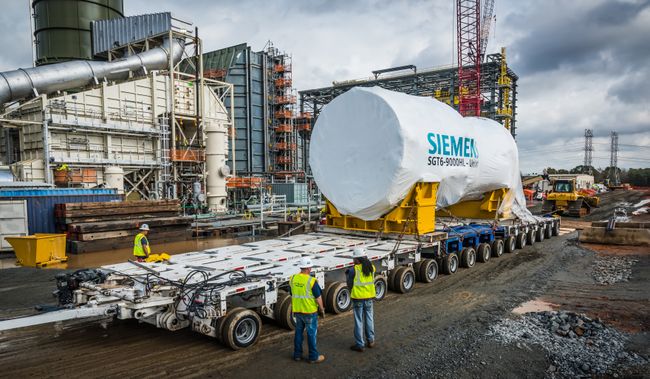First fire of SGT6-9000HL gas turbine

Siemens Energy said it has achieved a major milestone by successfully starting the world’s first SGT6-9000HL gas turbine at Duke Energy’s Lincoln Combustion Turbine Station.
The first fire of the turbine confirms the engine and the auxiliary systems – including the gas supply, lube oil system, control system and startup systems – are working together as designed, Siemens said. During first fire, the SGT6-9000HL ramped up to a pre-determined test speed, and the combustion system ignited.
In November 2019, Siemens delivered the 402 MW unit from its manufacturing plant in Charlotte, N.C., to Duke Energy’s Lincoln station near Denver, North Carolina, U.S., where workers lifted the 340-ton turbine onto its foundation.
After the first phase of testing is completed, the SGT6-9000HL will continue its four-year testing plan (2020-2024), gradually introducing technologies to achieve the next level of efficiency.
The unit will operate in simple-cycle mode under real-world power plant conditions, allowing Siemens to continually assess and optimize the performance while gaining valuable commercial operating experience.
The gas turbine’s ramp-up rate is about 85 MW a minute, maximizing operational flexibility and integration with fluctuating renewable generation. With increased inspection intervals of 33 000 equivalent base-hours and 1250 equivalent starts, the unit will also provide outstanding reliability and lower life-cycle costs.
When all testing is completed in 2024, Siemens will turn over the advanced unit to Duke Energy. The unit will be the most efficient of its type in Duke Energy’s fleet, generating enough energy to power more than 300 000 homes in the Carolinas. Investing in natural gas technology will also help Duke Energy close coal plants faster and reach its aggressive goals for cutting carbon emissions by at least 50% by 2030.
The HL-class’s engine architecture is composed of an air-cooled four-stage power turbine, hydraulic clearance optimization for higher efficiency at full load while facilitating immediate restart, a service-friendly steel rotor design with Hirth serrations and a central single tie rod and a can annular combustion system.